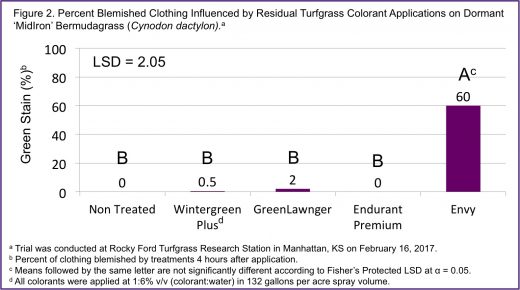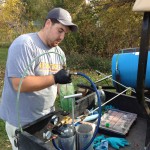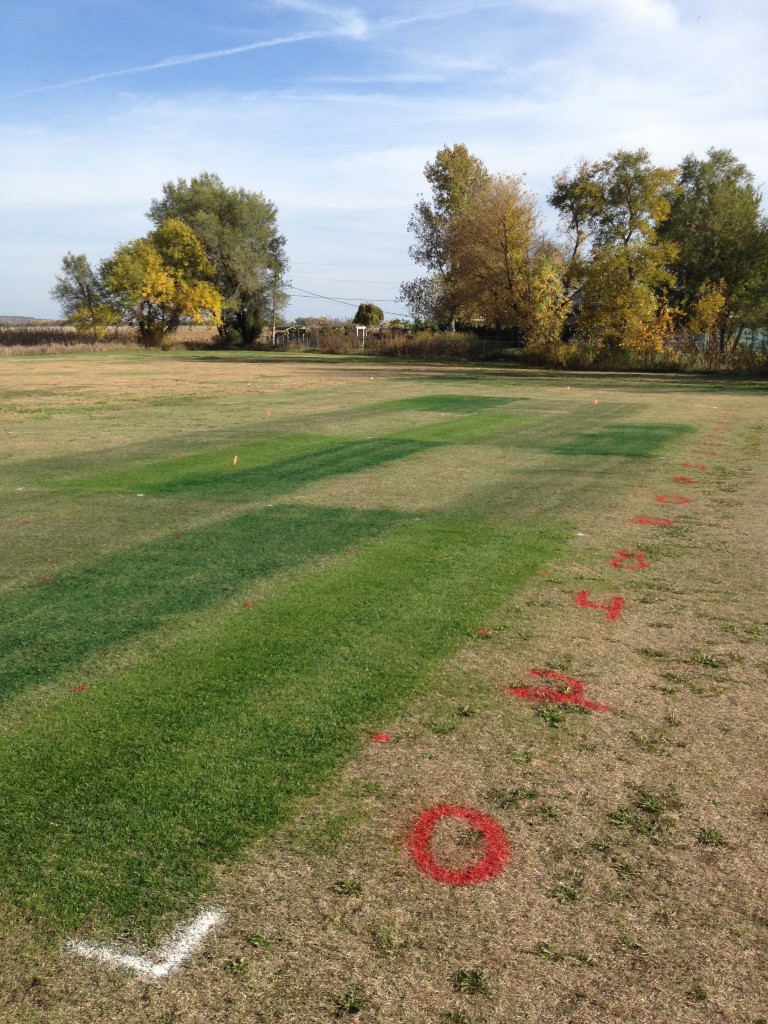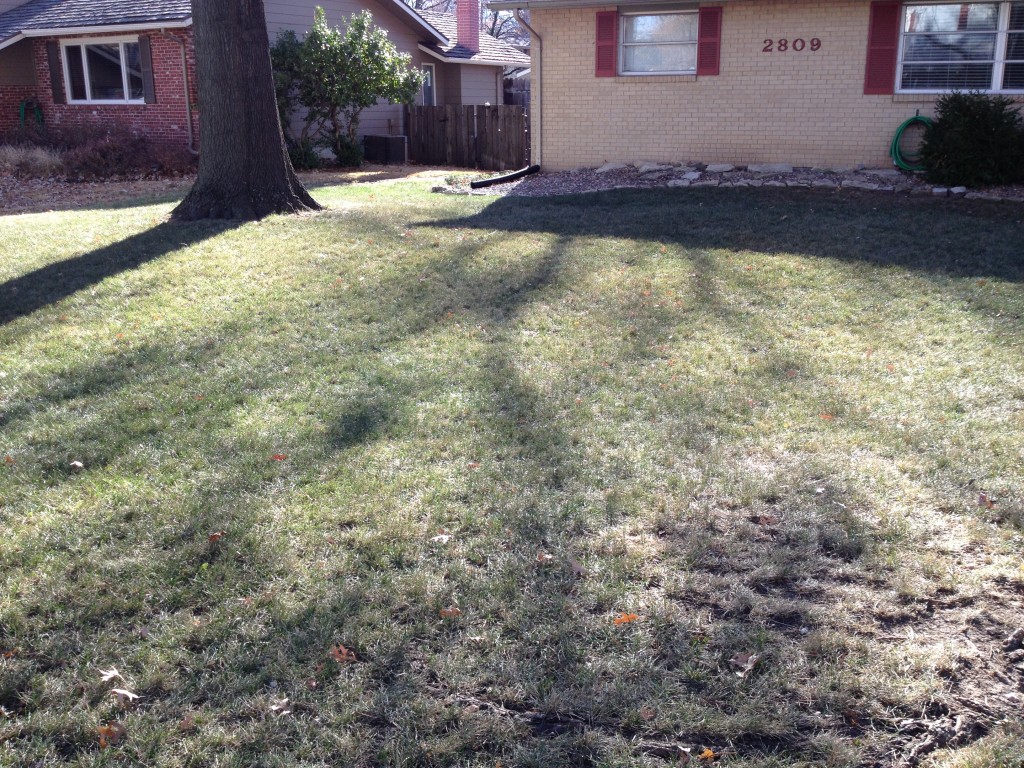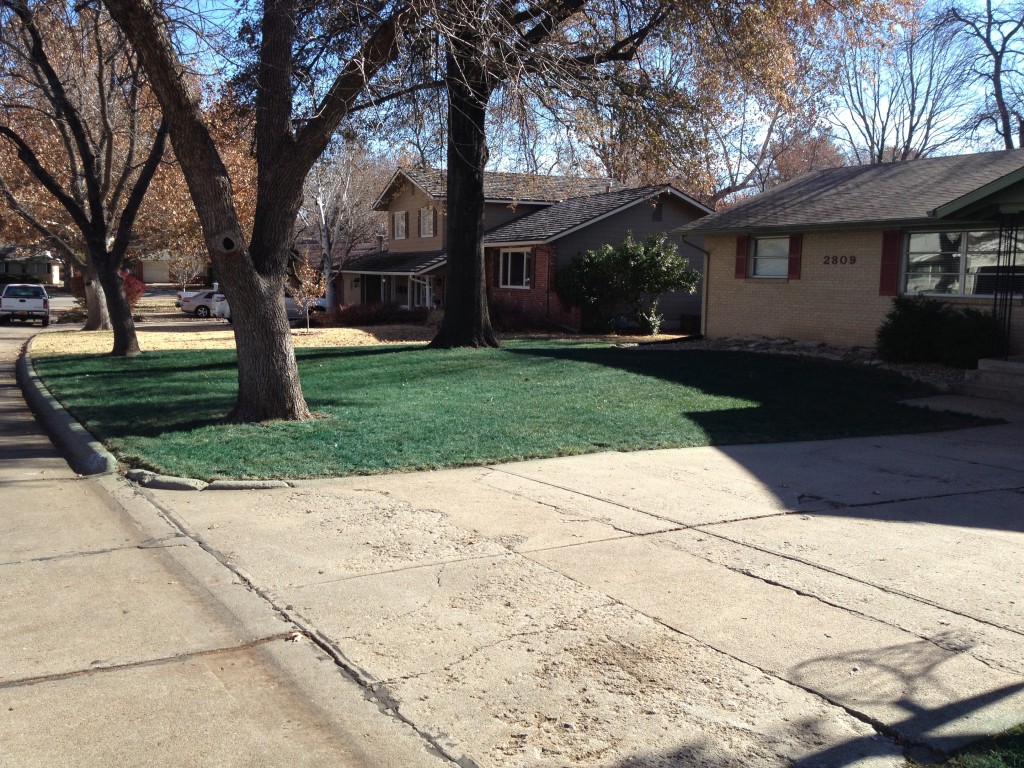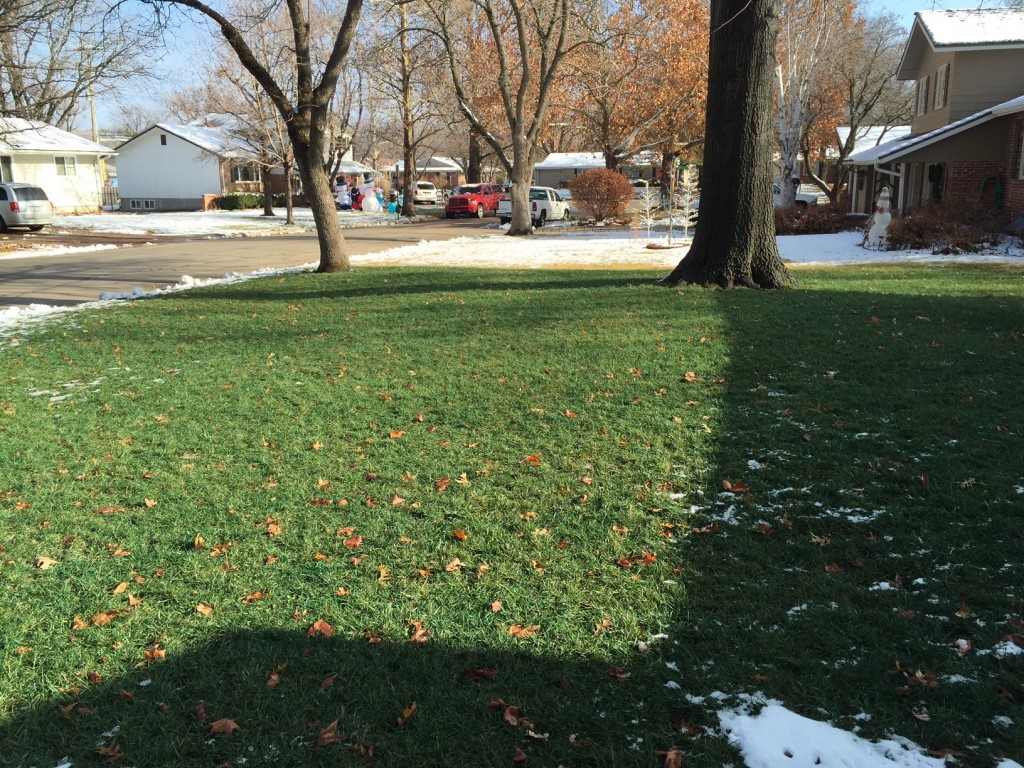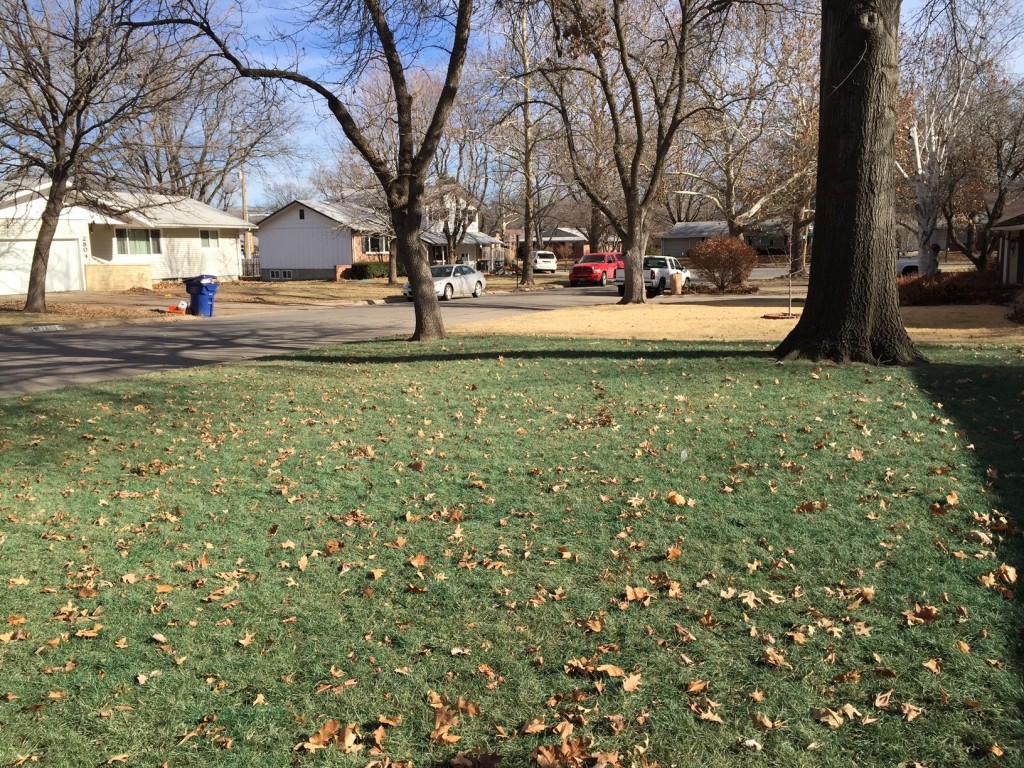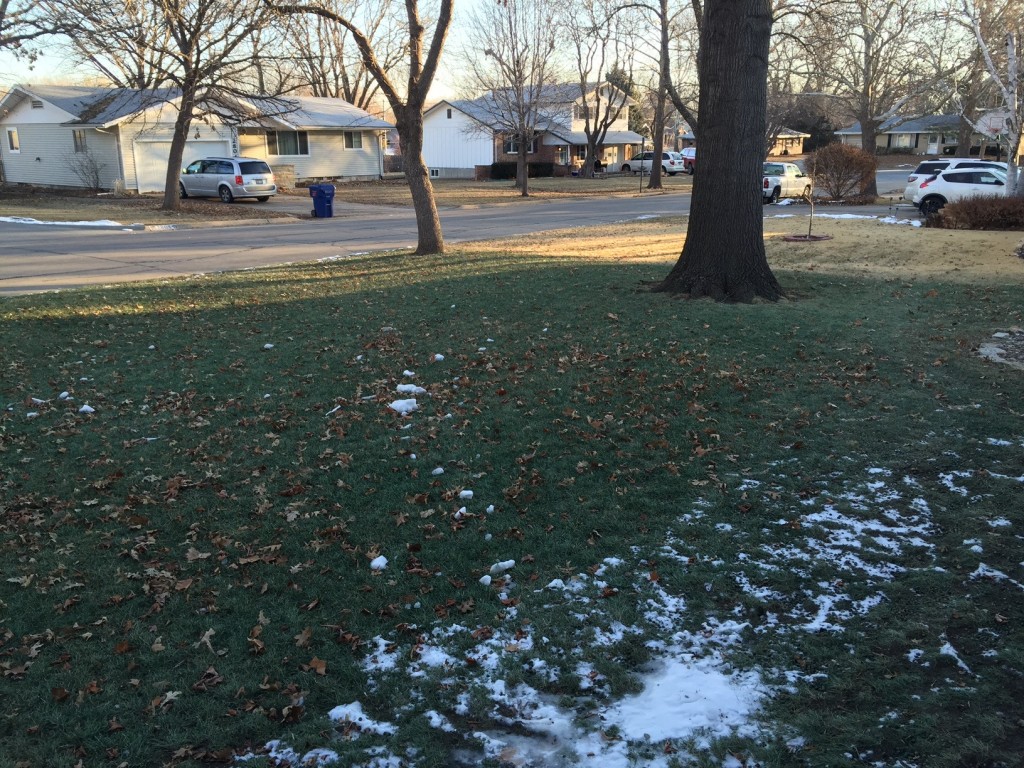Effect of Dormant ‘MidIron’ Bermudagrass Colorant Applications on Clothing Blemishing
(By Jared Hoyle, KSU Turfgrass Research and Extension and Daniele McFadden, KSU Turfgrass Undergraduate Research Assistant)
Summary. Minimal research exists on potential clothing blemishing when athletes contact turfgrass applied with colorants. Field trials were conducted to test the effect of turfgrass colorant applications on clothing blemishing if a athlete is to come in contact with the playing surface. Turfgrass colorants will adhere to turfgrass leaf blades and do not blemish clothing. Although, tested turfgrass pigments did result in significant blemishing of clothing.
Rationale. Bermudagrass (Cynodon dactylon) is a warm-season turfgrass used on athletic fields in the Midwest. Although a desirable turfgrass species for athletic fields it fails to maintain acceptable green color during winter. Turfgrass colorants have been utilized to maintain acceptable green turf color through dormancy periods. Athletes of all ages play on sports fields where colorants have been applied. Extensive research has explored turfgrass colorants on turfgrass quality but minimal research exists on potential clothing blemishing when athletes contact turfgrass applied with colorants.
Objectives. The objective of this research was to determine if turfgrass pigments and paints blemish athletic clothing after the recommended dry time.
Study Description. Field research trials were initiated Feb. 16, 2017 at Rocky Ford Turfgrass Research Center in Manhattan, KS on dormant ‘MidIron’ bermudagrass maintained at 3.8 cm. Treatments were applied to 1.5 by 1.5 m plots arranged in a randomized complete block design with four replications. Treatments consisted of three paints (Wintergreen Plus, Green Lawnger, Endurant Premium), one pigment (Envy) and a non-treated control for comparison. All colorant treatments were applied at 1:6 (v:v) dilution in 1,234 L ha-1 spray volume. After recommended drying time (4 hrs), a white cotton t-shirt was pulled 1.5 m across the plot weighted down with 11.4 kg. Digital image analysis was used to determine percent blemishing of t-shirt area. Data was subjected to ANOVA in SAS and means were separated according to Fisher’s Protected LSD at 0.05 significance level.
Results. Envy (turfgrass pigment) resulted in the highest blemished clothing percentage (60%). All other treatments were no different than the non-treated (Figure 2). Results demonstrate that the tested turfgrass paints safely adhere to the turfgrass canopy and do not blemish athletic clothing.
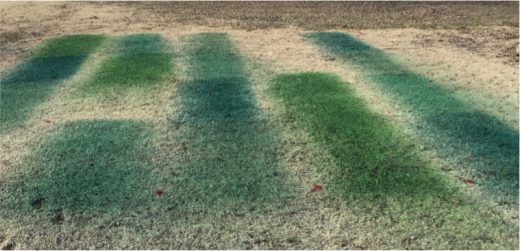
Always remember to READ THE LABEL for the correct rate, turfgrass tolerance, and specific instructions before application!!!
***Mention of trade names or commercial products in this article is solely for identification purposes and does not imply recommendation or endorsement, nor is criticism implied of similar products not mentioned by Kansas State University.***
Don’t forget to follow me on twitter @KSUTurf.
Also, visit our facebook page www.facebook.com/KSUTurf
